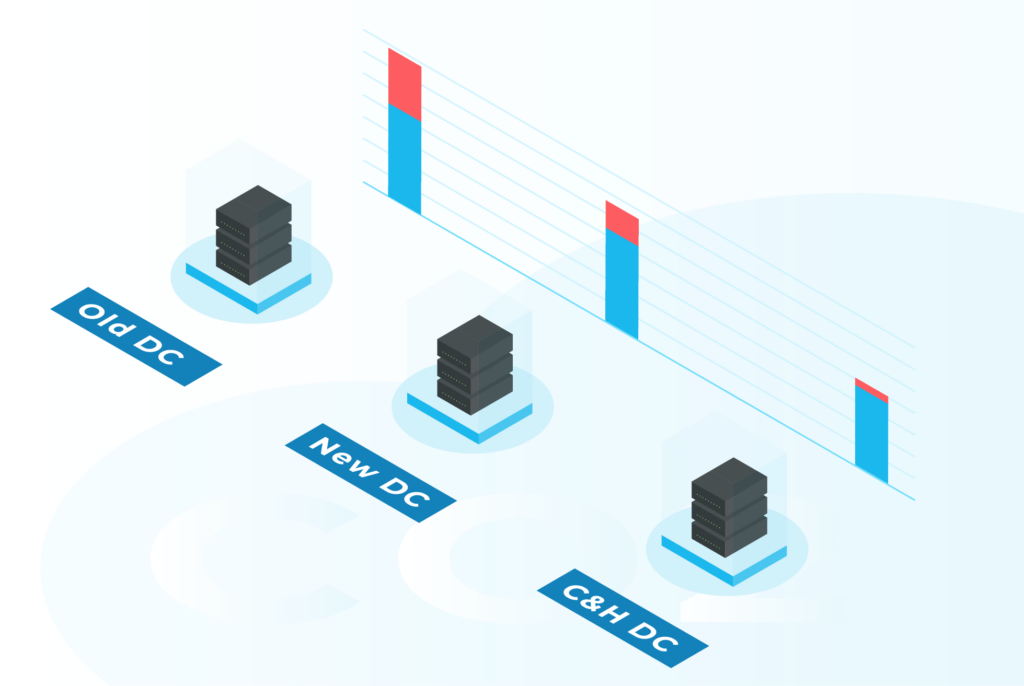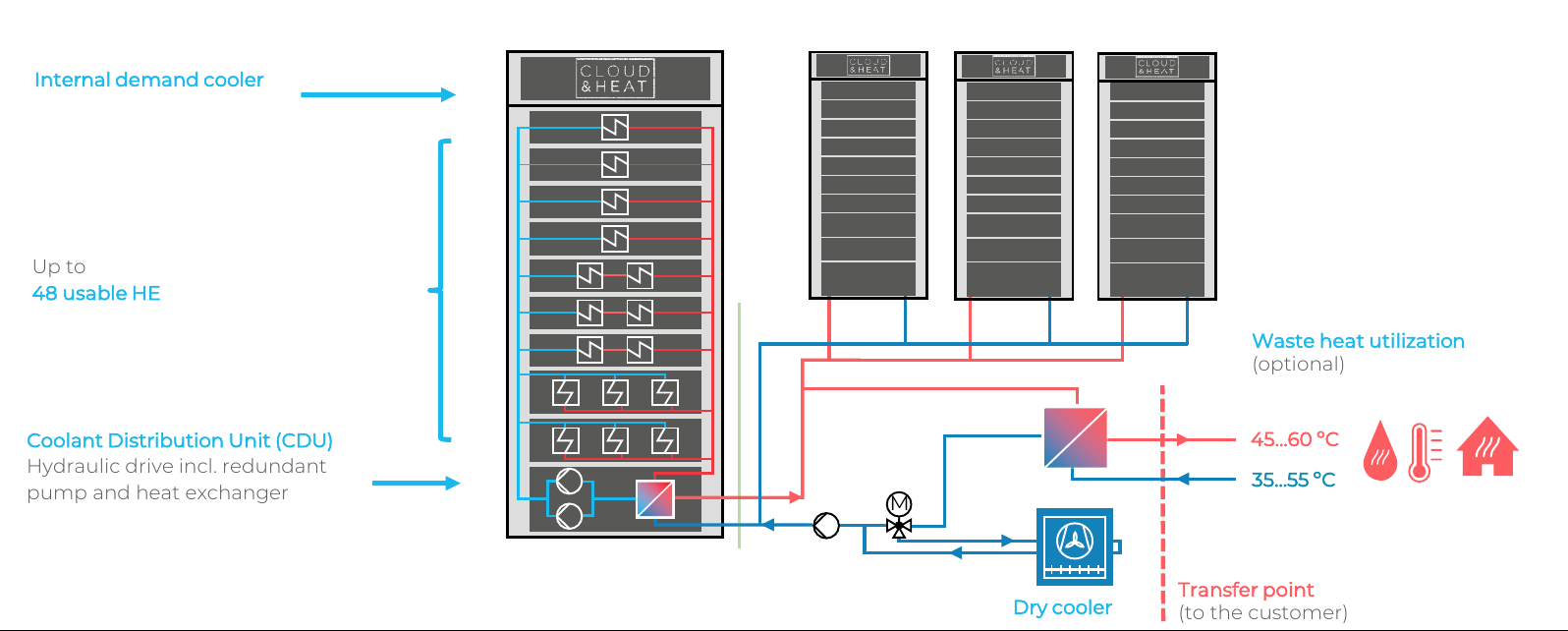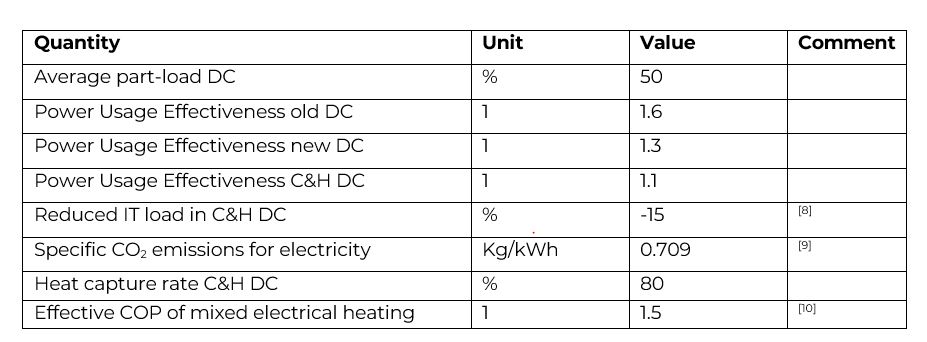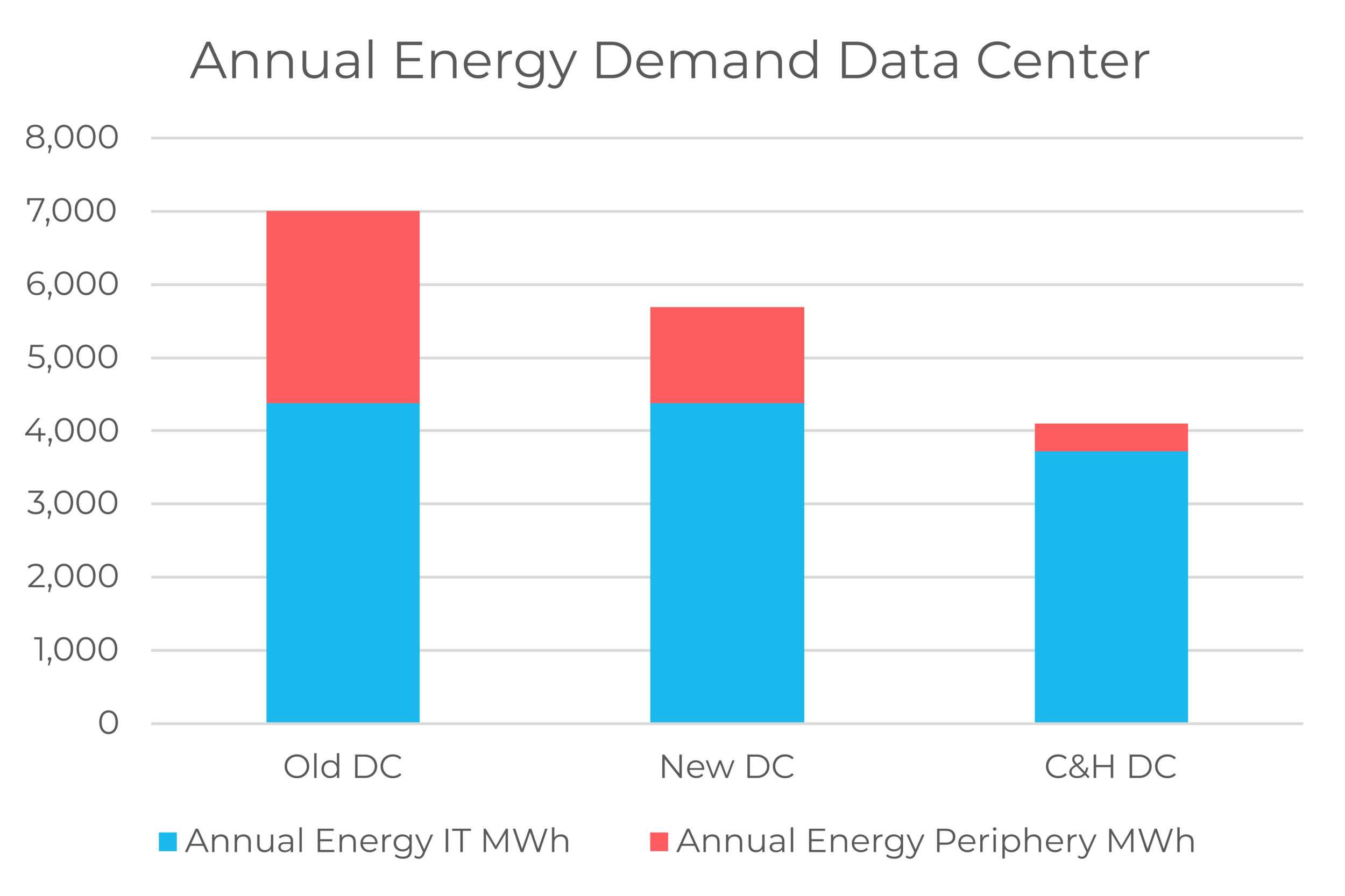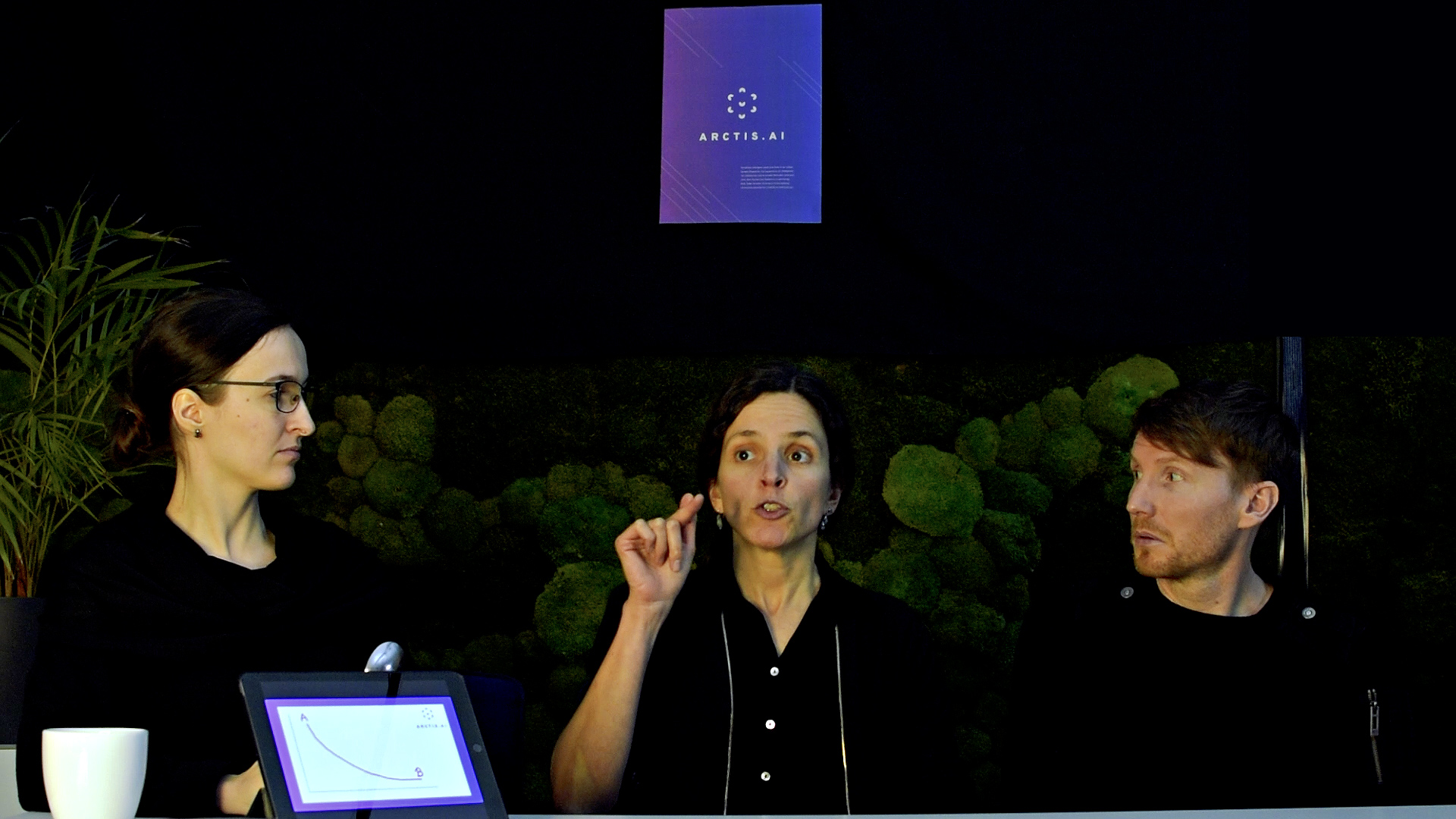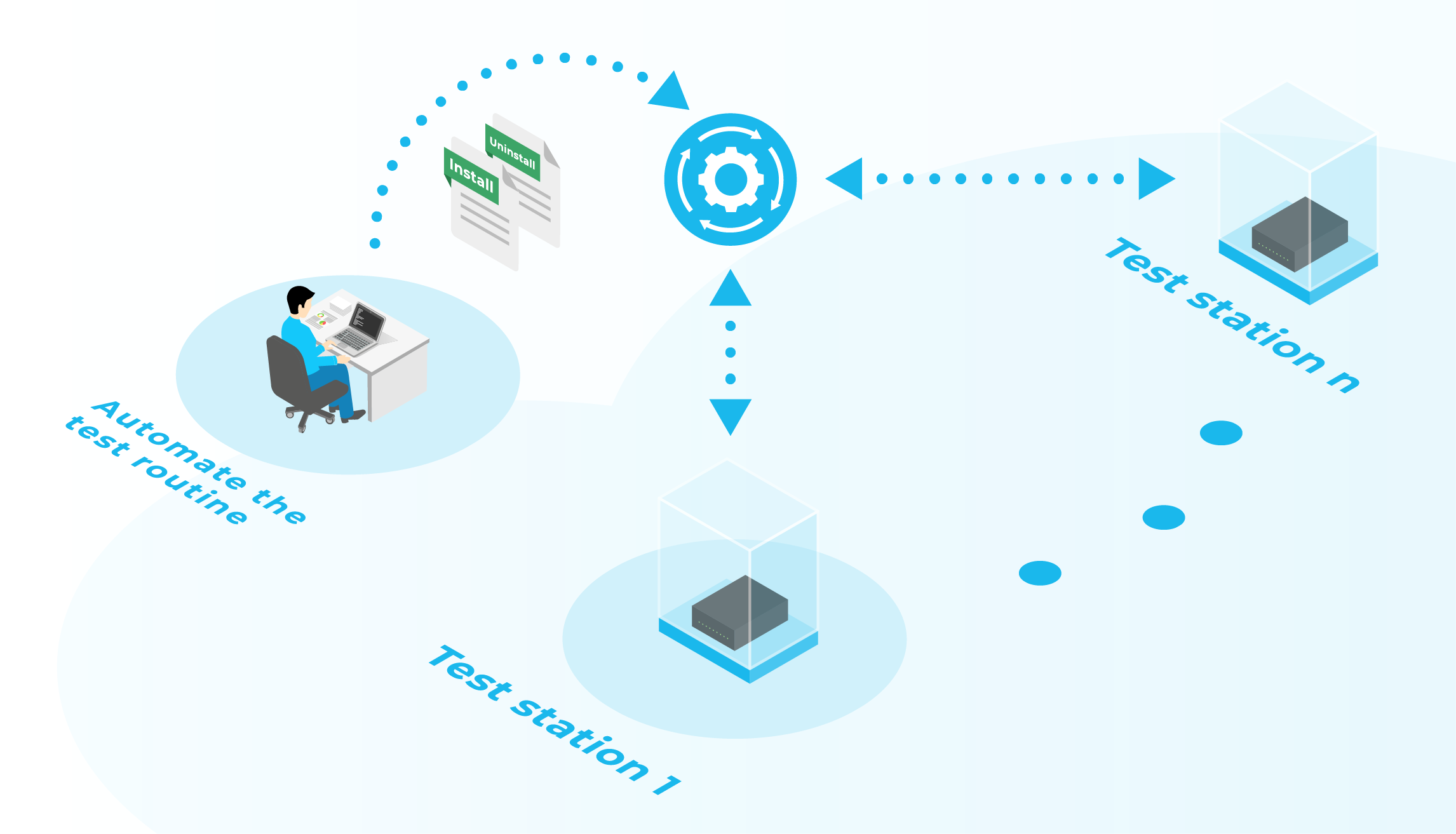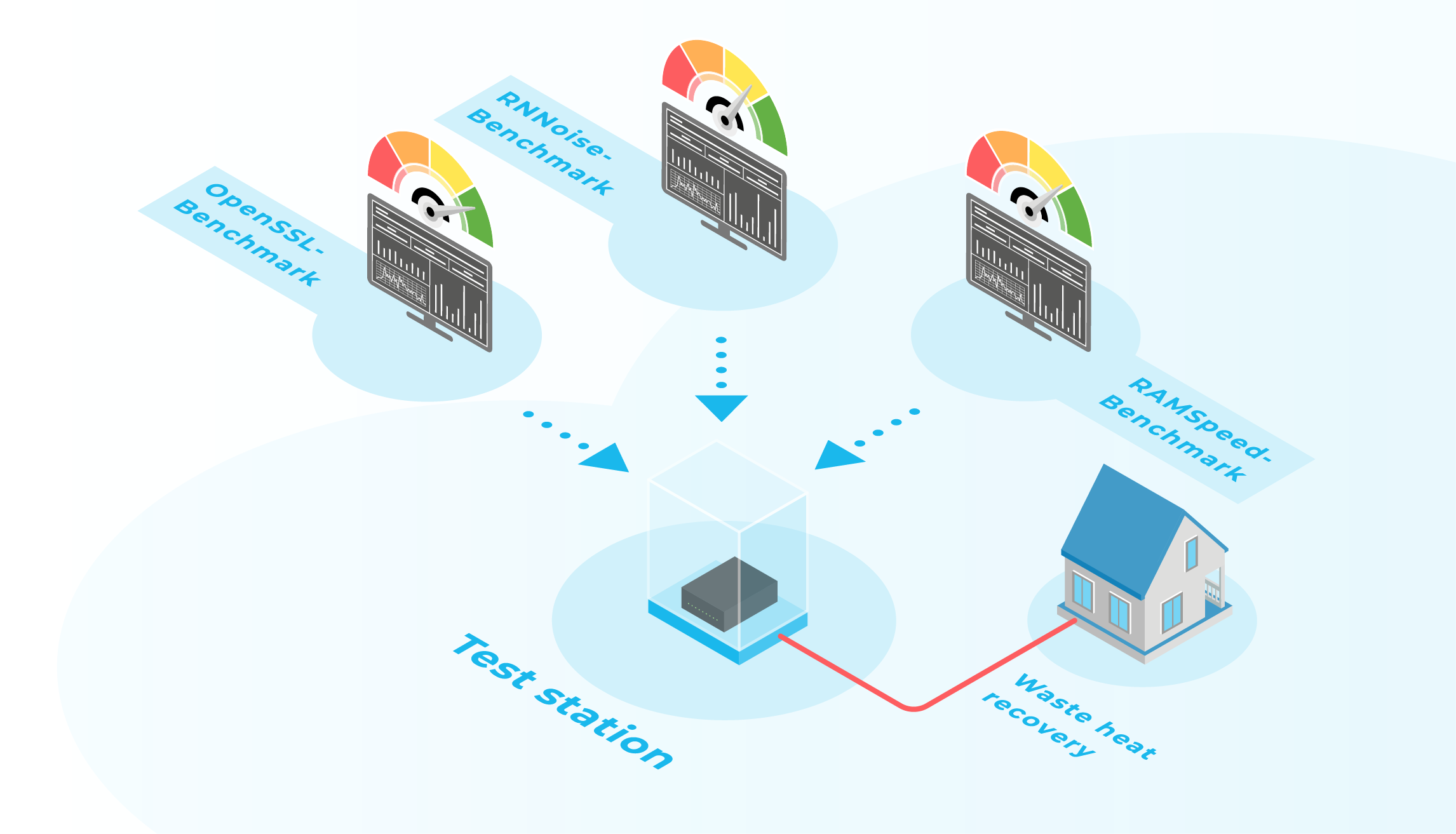A Cloud&Heat data center (DC) saves almost a third of the CO2 emissions compared to a conventional DC. Combined with server virtualization, load shifting, renewable energy sources and heat recovery it is carbon-neutral.
Why shall we care about data centers?
Data centers consume a lot of energy and all the energy is eventually converted into heat. A study from 2020[1] considering the massive effort in making DCs more energy efficient estimates roughly 1 % of the global electrical energy to be consumed by DC in 2018 with a flattened-out trend at approx. 200 TWh per year. This equals to the total electricity consumption of the highly technicised ten million people United Arab Emirates at the same time[2]. These high figures highlight clearly that the advantages we enjoy today—including the utilization of DCs—are possible only by borrowing resources from future generations[3,4].
Therefore, it is of utmost importance to cut down carbon dioxide emissions as stated in the Paris Agreement[5] in order to keep the global average temperature rise below 1.5 K and the earth a worth living place. This is the point where Cloud&Heat comes into play. We are a full stack provider of turnkey digital infrastructure solutions including DCs. This implies that we work closely together with the client and all other relevant stakeholders from the early beginning of conceptualization, planning, engineering, via construction, commissioning, and testing until operation of the DC. This enables us to transform a holistic circular economy concept into reality on a large scale and providing the client a tailor-fitted and turnkey solution; and having a global impact!
How to use it without killing the planet?
The approach that makes the Cloud&Heat solution unique is to join the direct hot-liquid cooling for highest energy efficiency and heat recovery (see figure below this paragraph) with virtualization and managed services for utmost scalability and data security. A dynamic load shifting tool[6] allows to move computing jobs to the most suitable server depending upon the optimization objective (highest utilization of renewable energy sources, lowest CO2 emissions, latency, cost, and the like.)[7]. Transferring data is easier than heat. The Cloud&Heat DC requires less auxiliary energy because there is less heat to be removed from the air (due to direct hot-liquid cooling capturing most of the heat). Therefore, smaller cooling machines can be used, saving material and additional carbon emissions. Due to an elevated energy density, the floor footprint can be much smaller than in a conventional DC (down to a fifth for a similar IT power) yielding smaller buildings, less material to be used and transported, and the like. Therefore, it is feasible to place the DC close to locations of heat utilisation. Preferably is, of course, when both IT and heat demand collapse on a single place, in order to have full benefits of lowest latency and carbon footprint as it is favorable for edge DCs.
Figure 1: Schematic of a liquid-cooled Cloud&Heat data center
What does this actually mean?
In order to investigate the positive effect of the Cloud&Heat approach, we have carried out energetic simulations for three DC cases referring to 1 MW of IT load of an old DC:
- Existing conventionally air-cooled data center (Old DC)
- New conventionally air-cooled data center (New DC)
- New C&H data center with direct hot-liquid cooling (C&H DC)
The following assumptions have been made:
Table 1: Energy demand and carbon emissions of data centers
As a result of the simulations, we calculated the annual electrical energy demand for the three DCs (see figure below this paragraph). It can be observed that a new conventional DC (5,694 MWh) requires 39 % more and old one (7,008 MWh) even 71 % more energy than a C&H DC (4,095 MWh). Due to the direct hot-liquid cooling it is even possible to reduce the annual energy required for the IT since the onboard fans can be diminished.
Figure 2: Annual energy demand of data centers in megawatt-hours per year
Considering the carbon dioxide emissions associated to electrical energy production and transport, we can calculate the carbon footprint of the DCs. We have considered more or less the worst case of a coal-fired power plant, which is the reason why the absolute values of the CO2 emissions are relatively high. Any situation with other non-renewable or renewable source make the situation better. However, the comparison among the three cases is always possible and corresponds to the energy demand.
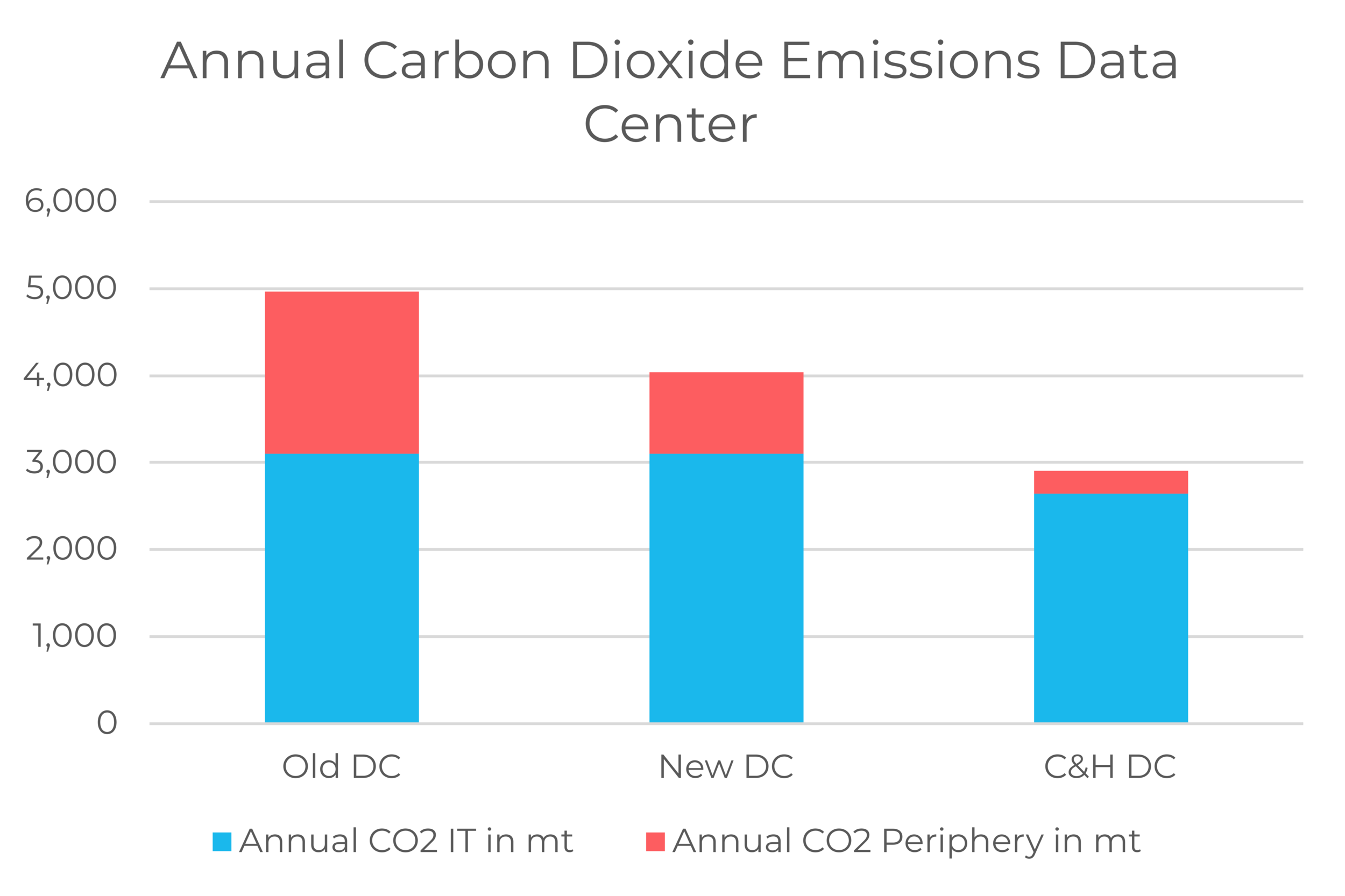
Figure 3: Annual carbon dioxide emissions of data centers in metric tons per year
‘We have a solar plant nearby. There are no CO2 emissions’, you say?
This is great! Having renewable sources, such as solar, wind, tidal, wave, and the like. nearby contributes tremendously to reducing the carbon footprint. However, these sources are still not completely carbon free. Even if there is an island solution and the DC would be completely off-grid, energy is required and associated CO2 emissions occur for construction and transport of material.
An extremely energy efficient C&H DC requires substantially less power and therefore the power plant, the emergency generators, and the uninterruptable power supply (UPS) can be smaller. Since the construction and production of all the power-related components require materials that have to be transported to the construction site, both the investment costs and the associated carbon footprint are reduced significantly.
In our example, the power supply of a Cloud&Heat DC is only 65 % of a old one and therefore, the power plant (or the fraction of capacity of one used for the DC) is reduced likewise. This has a global impact since materials are gathered from all around the world.
What about heat recovery?
Now, we come to the core feature from energy perspective: the ability to capture heat at high temperature level. According to our simulations, there are approx. 3,150 megawatt-hours available for heat recovery. Supplying this to buildings and use it for heating, up to 2,100 megawatt-hours of electricity can be saved due to
reduced heat pump and direct electrical heating. This saves another 1,500 metric tons of CO2 per year. Considering this, makes that the renewable-energy-driven DC actually carbon-neutral or even carbon-positive.
The take-aways
This contribution presents results of annual simulations, comparing the energetic effects of three different DCs. It could be observed that an old air-cooled DC requires 71 % and a new air-cooled one 39 % more electrical energy than a new Cloud&Heat DC. Likewise, the figures hold true for the associated carbon emissions. However, the positive effect of the Cloud&Heat solution applies also to other aspects: the energy density is much higher (in average up to five-fold) requiring smaller building space, less material, less materials transport, and the like.; the power consumption is much smaller (65 % compared to an old DC) and therefore the required electrical components can be smaller. The options of server virtualisation and optimised load-shifting in conjunction with heat recovery takes advantage of waste and provides additional carbon savings for e.g. building heating.
In the end, the Cloud&Heat DC saves approx. a third of the carbon emissions and, considering renewable energy sources combined with heat recovery, it is actually carbon-neutral.
Sources
- [1] Masanet, E., Shehabi, A., Lei, N., Smith, S. & Koomey, J. (2020), Science, Vol. 367, pp. 984-986, https://datacenters.lbl.gov/sites/default/files/Masanet_et_al_Science_2020.full_.pdf
- [2] Al-Badi, A. & AlMubarak, I. (2019), Arab Journal of Basic and Applied Sciences, Vol. 26, pp. 488-496, https://doi.org/10.1080/25765299.2019.1687396
- [3] McGovern, G. (2020), World Wide Waste, Silver Beach Publishing Meath Ireland, ISBN 978-0164446-2-1
- [4] Klein, N. (2019), On Fire – A burning case for a green new deal, Allen Lane an Imprint of Penguin Books, United Kingdom, ISBN: 978-0-241-41073-8
- [5] Paris Agreement (2015), http://unfccc.int/resource/docs/2015/cop21/eng/l09r01.pdf
- [6] https://gitlab.com/rak-n-rok/krake, downloaded on 23rd of July 2021
- [7] Hantsch, A. (2020), Energieeffizienz durch softwaregeführtes Lastmanagenemt in verteilten Rechenzentern, in BITKOM Meeting AK Software Engineering and AK Software Architecture – Software meets Sustainability, 16th June 2020
- [8] The application of direct hot-liquid cooled servers allows to eliminate on-board fans. Since their energy consumption is included in the IT load, the C&H approach yields a lower IT load whilst providing the same IT services as the conventionally air-cooled DC. The value of 15 % is based on own measurements.
- [9] Value for the US, 2019, https://www.epa.gov/energy/greenhouse-gases-equivalencies-calculator-calculations-and-references
- [10] Assumed average Coefficient of Performance of building heating with direct electrical and heat pump heating.
